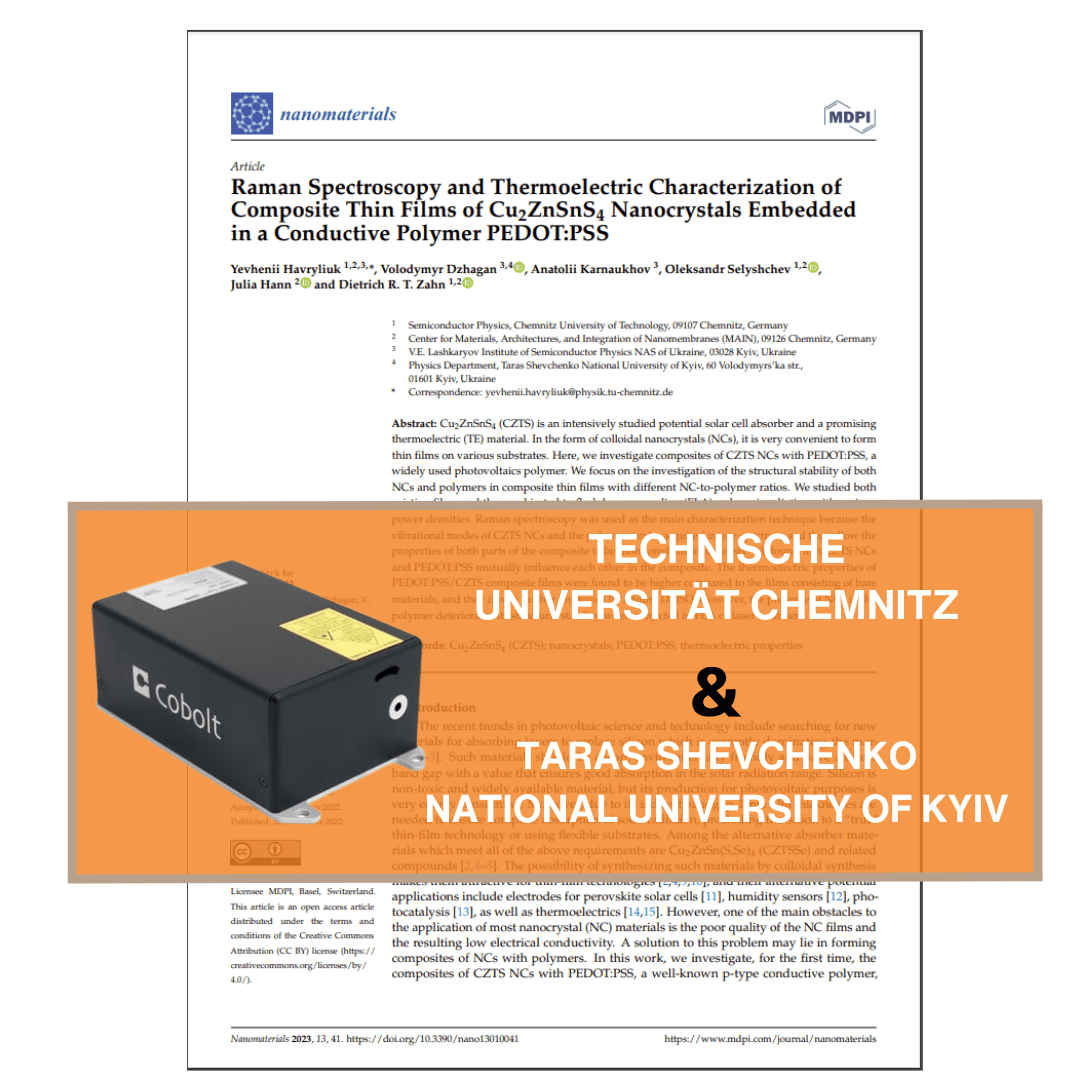New study: CZTS Nanocrystals Boost Solar Panel Efficiency
A new study published in the journal of Nanomaterials explores the potential of a material known as Cu2ZnSnS4 (CZTS) for use in solar cells and as a potential thermoelectric material.
Researchers at Chemnitz University of Technology in Germany, in collaboration with V.E. Lashkaryov Institute of Semiconductor Physics NAS of Ukrain and Taras Shevchenko National University of Kyiv, found that when CZTS is transformed into tiny particles (nanocrystals) and combined with a common polymer called PEDOT:PSS, shows promising results.
However, the study reveals a twist: while the combination enhances the thermoelectric properties, it also affects the structural stability of the polymer. The team used Raman spectroscopy and our Cobolt Fandango 515 nm to uncover these insights.
This breakthrough could pave the way for more efficient and durable solar panels, but further research is needed to address the stability issues.
More resources
Looking for more in-depth information? Visit our Knowledge Bank page for detailed articles and insights on our products and technologies.


